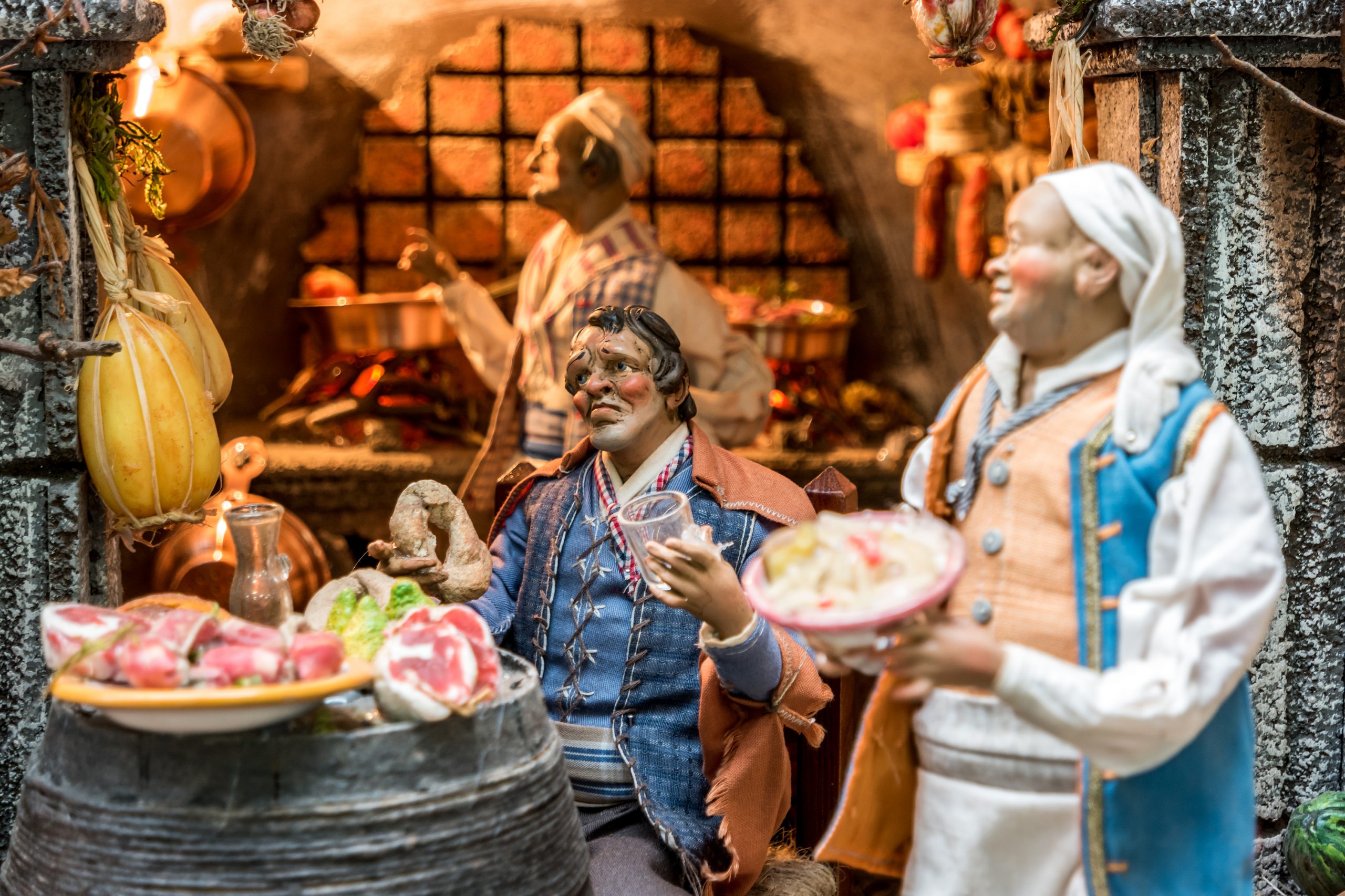Christmas is in the air. In the U.S. as well as in Italy, decorated trees and nativity scenes show up everywhere, inside the houses and in the streets.
In Altadena, California, the Christmas Tree Lane – Santa Rosa Avenue – is considered as the “oldest large-scale Christmas lighting spectacle in the United States” and listed as Historical Landmark, dated 1920.
One of the artisan shops in Naples .
The Italian equivalent may be the world famous Christmas Alley in Naples’ historic district, featuring hundreds of small artisan shops dedicated to the traditional presepe.
They are open year round, but from early November to the feast of the Epiphany on January 6 the narrow alley gets crowded with visitors and tourists, who walk through the twinkling Christmas lights and temporary stands expanding the usual display of merchandise. This includes handcrafted wood or terracotta figurines of the Holy Family and other symbolic characters, but also animals, household tools, and caricatures of contemporary politicians.
The typical Neapolitan Nativity is a combination of sacred and profane.
Tiny replicas of houses, trees, bridges, and creative building materials to reproduce mountains, grass, and lakes are also available, some of them even electric-powered. The market has pretty much everything to meet everybody’s decorating desires and the price range is wide, yet handmade complete nativity sets can be very expensive.
A combination of sacred and profane, the typical Neapolitan Nativity dates back to the late 18th century and has been passed on for generations by skilled artists. Nowadays, the best time to visit Via San Gregorio Armeno – this is the real name of the alley – is probably during the Fall, right before the busier holiday season, when it’s possible to watch the craftsmen prepare their shops and work on the figurines, carving and painting them.
Among the wood or terracotta figurines, there are caricatures of contemporary people .
Yet the evocative Christmas atmosphere goes beyond the alley’s limits and extends throughout the city, with wreaths and ornaments adorning the buildings and a delicious smell of struffoli (honey balls) coming out of the bakeries. Living nativities are also very popular, and the local National Museum of San Martino, a former monastery, hosts the remarkably large collection “Presepe Cuciniello”, which consist of over 160 human characters, 80 animals, 28 angels, and about 450 miniature objects from the 1700’s.
According to the Catholic tradition, most Italian families built up their trees and elaborate presepi on December 8, the feast of the Immaculate Conception, and will place Baby Jesus in the crib on the night of the 24th.
The tradition of sculpting nativity scenes began in the 13th century and spread all over Italy thanks to St. Francis of Assisi, who recreated it with a manger and real characters in a cave in Greccio, a small town in Lazio region, to celebrate the mass on Christmas Eve in 1223. In just a few centuries, living or static presepi could be found in any Catholic church and were often exported outside Italy. The golden age for this peculiar form of art was in the Baroque period (16th – 18th centuries).
The world’s first living nativity is still commemorated in Greccio every year by staging six different performances, featuring medieval costumes and settings.





























